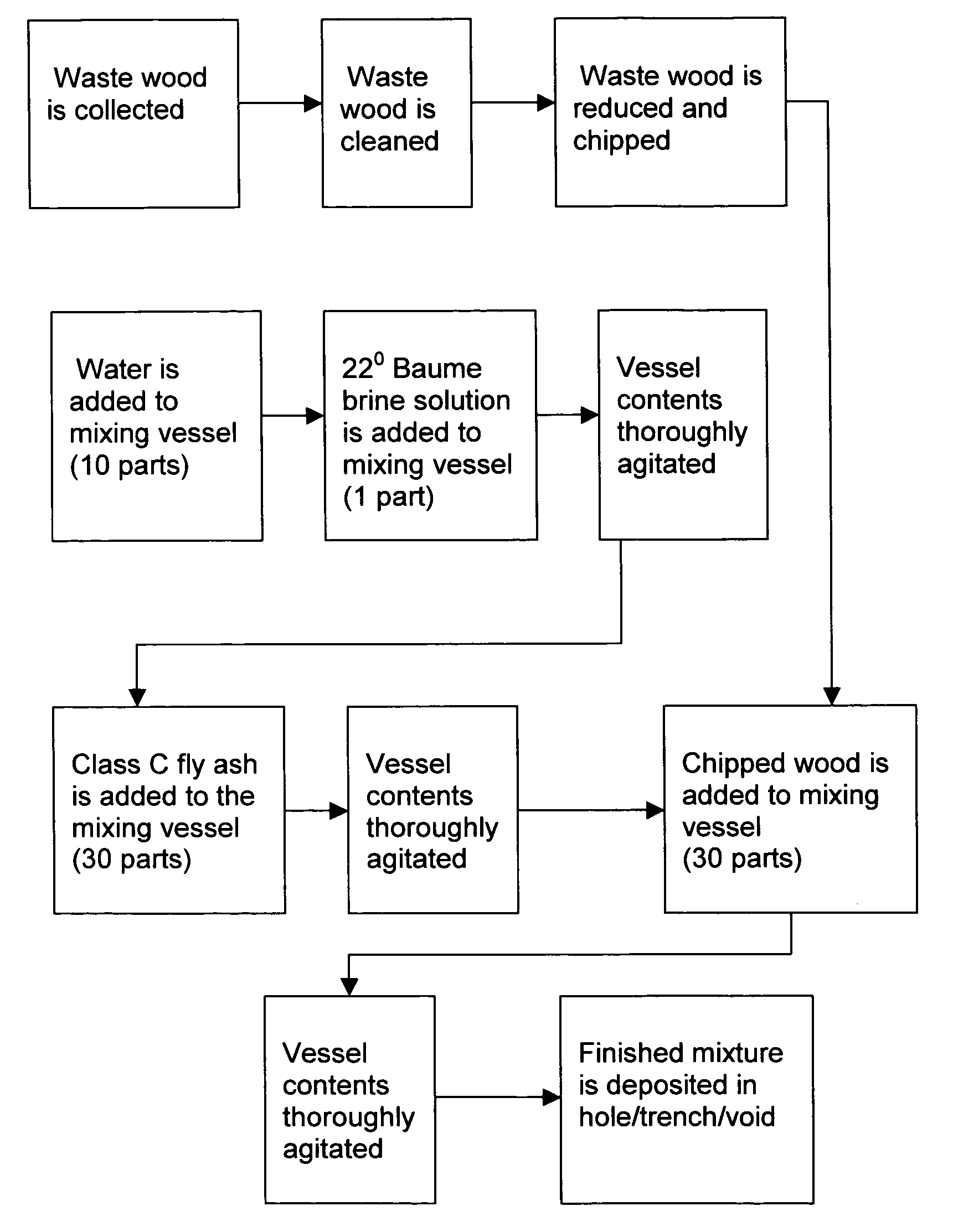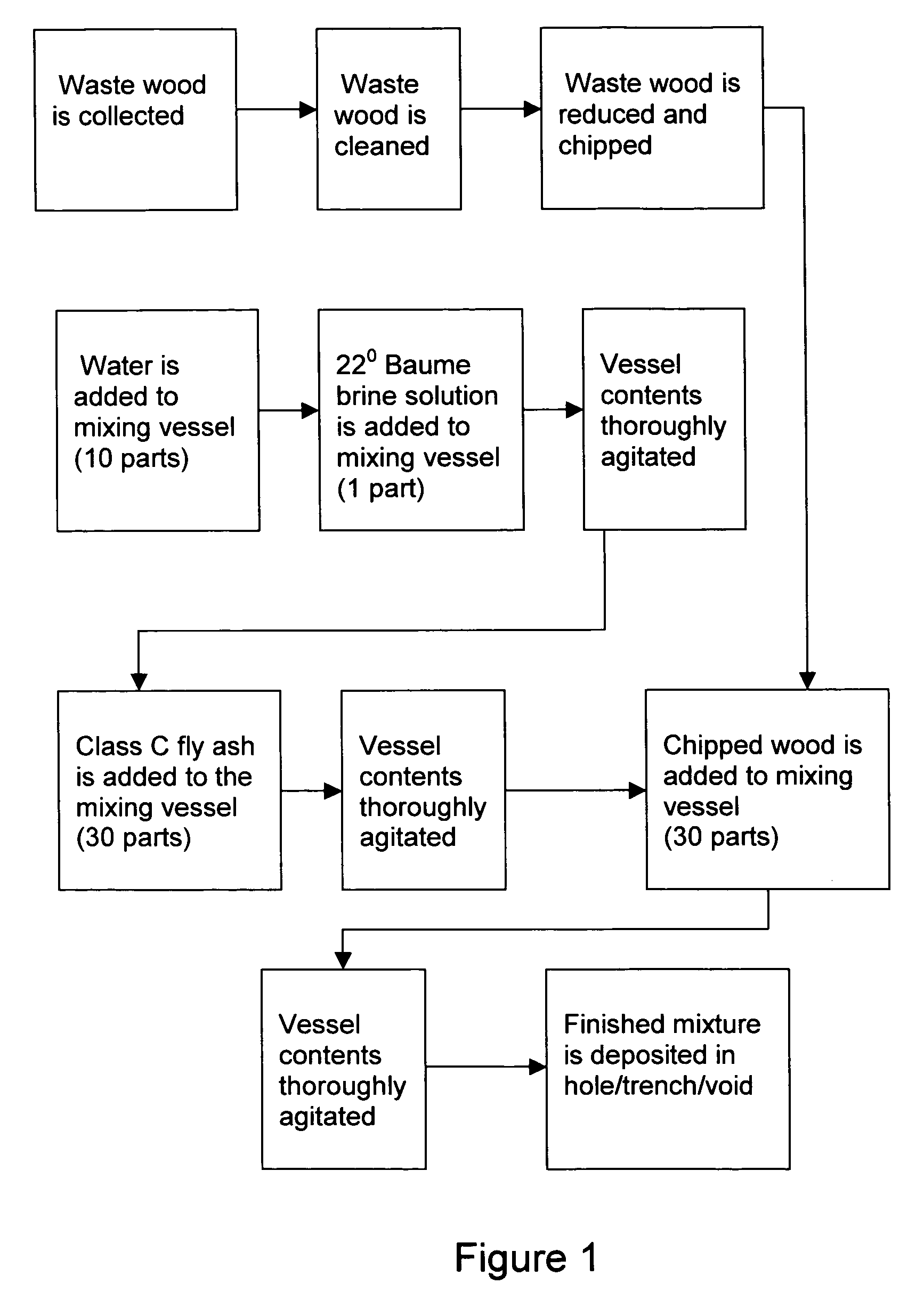Flowable fill and flowable fill method for disposal of recovered waste
a flowable fill and waste technology, applied in the field of waste recovery, can solve the problems of difficult visual discernibility difficult to distinguish between treated and untreated wood, and toxic to mammals and aquatic life, so as to reduce the leaching of arsenic, and effectively encapsulate the wood chips
- Summary
- Abstract
- Description
- Claims
- Application Information
AI Technical Summary
Benefits of technology
Problems solved by technology
Method used
Image
Examples
Embodiment Construction
[0027]The present invention involves the production of a flowable fill material, produced from readily available recovered and / or recycled materials, that doubles as a disposal medium for waste wood. More importantly, the present invention provides a disposal medium for treated wood, including CCA-treated wood. The preferred embodiment is comprised generally of Class C fly ash, salt solution (brine), water, and chipped waste wood.
[0028]ASTM Designation C618-03 describes fly ash as the finely divided residue that results from the combustion of ground or powdered coal and that is transported by flue gas. More specifically, C618-03 further describes Class C fly ash as fly ash normally produced from burning lignite or sub-bituminous coal, and in addition to having pozzolanic properties, also has some cementitious properties. The chemical and physical requirements for Class C fly ash, as defined by ASTM C 618-03 are included below in Table II and Table III respectively.
[0029]
TABLE IIASTM...
PUM
 Login to View More
Login to View More Abstract
Description
Claims
Application Information
 Login to View More
Login to View More - R&D
- Intellectual Property
- Life Sciences
- Materials
- Tech Scout
- Unparalleled Data Quality
- Higher Quality Content
- 60% Fewer Hallucinations
Browse by: Latest US Patents, China's latest patents, Technical Efficacy Thesaurus, Application Domain, Technology Topic, Popular Technical Reports.
© 2025 PatSnap. All rights reserved.Legal|Privacy policy|Modern Slavery Act Transparency Statement|Sitemap|About US| Contact US: help@patsnap.com



